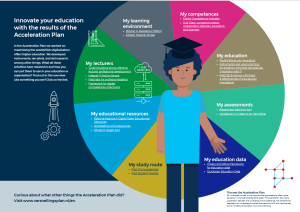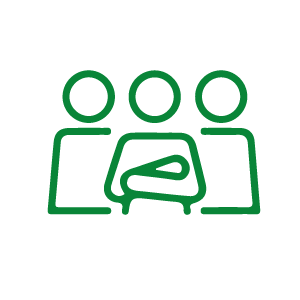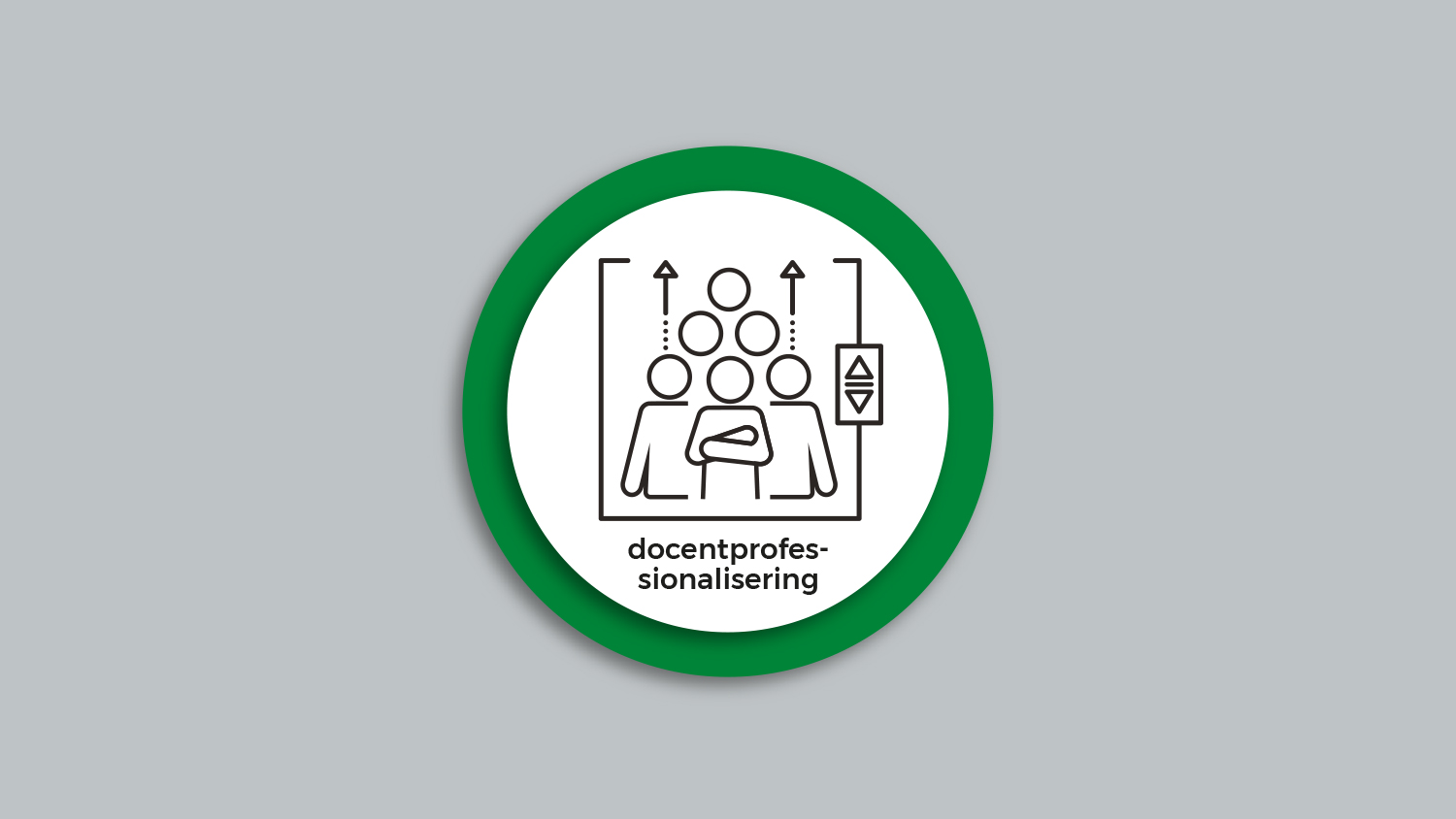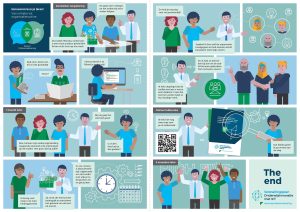
Infographic results Acceleration Plan
In the Acceleration Plan we worked on maximising the possibilities digitalisation offers higher education. We developed instruments, ran pilots, and
Acceleration plan | Good Practices of Educational Innovation with IT

If lecturers start to innovate their education, it can be beneficial for them to see how their colleagues have already gone about this. That is why we are collecting good practices of educational innovation with IT in the Facilitating professional development of lecturers zone. Lecturers explain how they use IT and how their teaching benefits from it. They also show who they have received help and support from, because innovating your education with IT is teamwork.

Iwan Wopereis of the Professional Development zone explains what constitutes a good example of educational innovation with IT.
Virtual Reality is used in laboratory and environmental science programmes to allow students to practice in unique practical situations, such as a crime scene. This enables them to experience practical situations they would otherwise not come across as students. What’s unique about this is that the VR environments were created by Technical Computer Science students under the guidance of lecturers and ICTO support staff.
In this video, Frank Balazs, Milou Timmer, Johan Talboom and Mirjam Winkelmolen of Avans University of Applied Sciences explain more about Virtual Reality in education.
In the article below, the team tells about virtual reality in laboratory teaching.
In a new version of the part-time study programme in Skin Therapy, lecturers opted for a blended approach with the use of online tools. By doing this, they want to motivate and engage students despite the limited number of contact hours. The lecturers were supported in the development of this approach by the Blended Learning Desk in The Hague.
In this video, IJsbrand Hoetjes, Gerbrich Hoeve, Wendy Termars-Gardien and Gwen van Lammeren talk about blended studying on the skin therapy programme using Collaborate tools.
In the first phase of their study programme, lecturers offer students a serious game called “The Internship”. By playing the game, students gain experience with the various working practices of the psychologist. The game was developed by a multidisciplinary team, with the lecturer as a content specialist, an IT developer, an educational expert (researcher), and an interaction designer.
In this video, Hans Hummel, Jannes Eshuis, Jeroen Storm and Aad Slootmaker explain more about serious gaming in psychology.
In the article below, lecturers get interviewed about Serious gaming on the BA in Psychology.
In 360-degree peer feedback, students receive feedback at several moments and from various perspectives. In this case, it is during the work they do on a larger real-life assignment offered by business partners. Students have an active role in their own learning process as they co-create their own assessment criteria and actively ask for feedback. They gain peer feedback, complete self-assessments, receive teacher feedback as well as feedback from business partners. The feedback from these different perspectives is bundled and used to improve their final assignment.
To find out more about 360 degree peer feedback, watch this video in which Anna Bos-Nehles and others explain the value of this good practice to the University of Twente.
In the article below, lecturers get interviewed about the project 360-degree peer feedback.
CEPHEI stands for Cooperative E-learning Platform for Higher Education in Industrial Innovation. This project aims to develop an innovation-based e-learning platform for industrial innovation. The project is unique because the course content is a combination of education-driven curricula and the needs of the business community. In addition, the project will establish ties with the Dutch business community to investigate the learning needs of professionals. Finally, flipped-classroom open standards will be developed and made available to the community.
To find out more about the CEIPHEI project, take a look at this video which explains the added value of the project.
Due to the coronavirus pandemic, the clinical placements of Bachelor’s students at Radboudumc’s medical faculty came to an abrupt halt. Even though it was no longer possible to visit the intensive care unit, virtual reality (VR), combined with the digital learning resource H5P, offered a good alternative. These could be used not only to give students a virtual tour of the intensive care unit, but also to visit the A&E department and even take a seat in an air ambulance.
Do you want to know more about the use of Virtual Reality in the ICU at the medical faculty of Radboudumc? Take a look at the video.
In the article, intensivist and lecturer Maarten van den Berg and education expert Carolien Kamphuis get interviewed about the project.
In the article, intensivist and lecturer Maarten van den Berg and education expert Carolien Kamphuis get interviewed about the project.
Want to know more about PleitVrij? Watch the video on the right. People involved in the project tell you about the approach and the added value of VR in education.
In the article below, those involved in the PleitVrij programme discuss pleading in a courtroom in a virtual environment. Curious? Download the article or read it below.
Calculating the air friction on a cyclist. Or the forces in the joint of someone walking with a stick. Students in the first year of the bachelor Movement Sciences must know all aspects of biomechanics. What makes students willing to spend hours practising skills on their own? That was the challenge faced by Knoek van Soest, lecturer and educational developer
at the Vrije Universiteit in Amsterdam. He developed a serious game and ensured that the test results for the subject biomechanics improved by leaps and bounds.
Curious about the success story of the game and the experiences of those involved? You can read it below. You can also download the article.

In the Acceleration Plan we worked on maximising the possibilities digitalisation offers higher education. We developed instruments, ran pilots, and

Educational innovation using ICT has been a priority in higher education for years, due to its impact on the quality

Getting started with the (continued) development of a powerful learning community How can collaboration between companies and educational institutions be

The field of education is constantly evolving. Students require dynamic, relevant content, while lecturers aim to optimise their teaching, making
Deze website maakt gebruik van cookies. Lees hier over onze Coookies